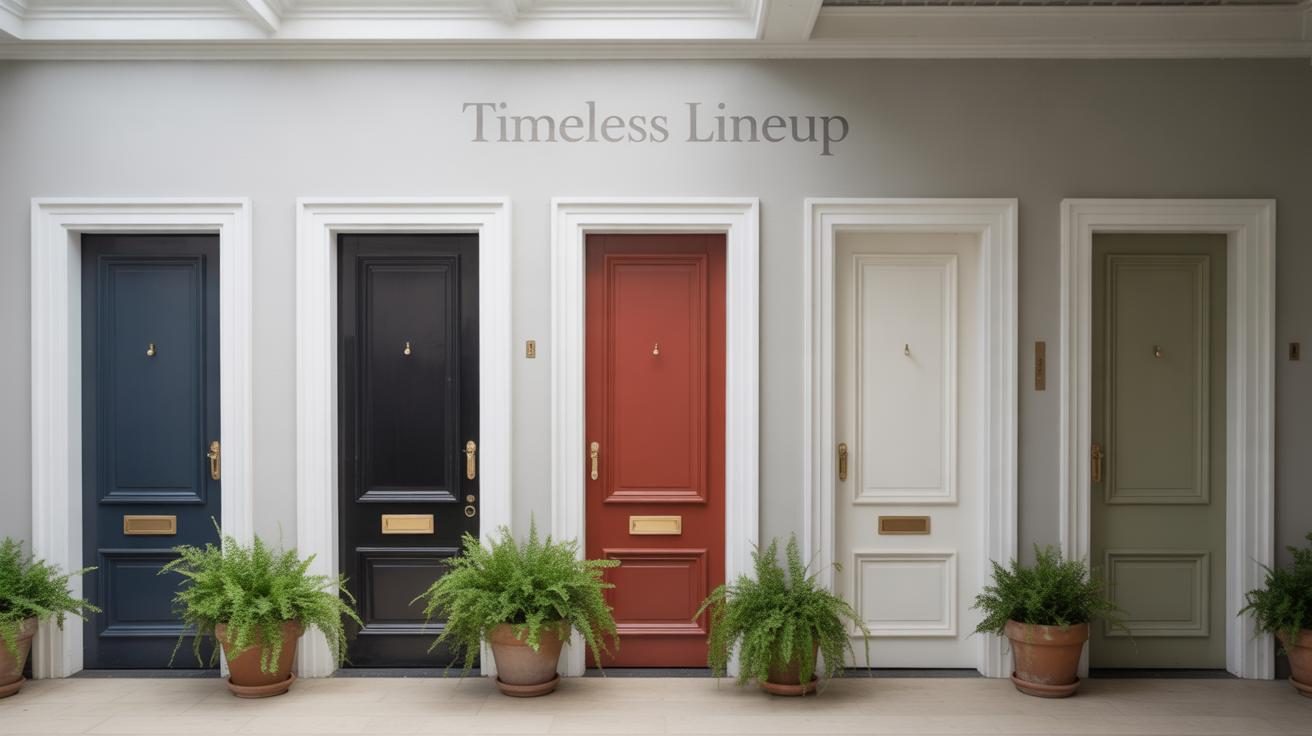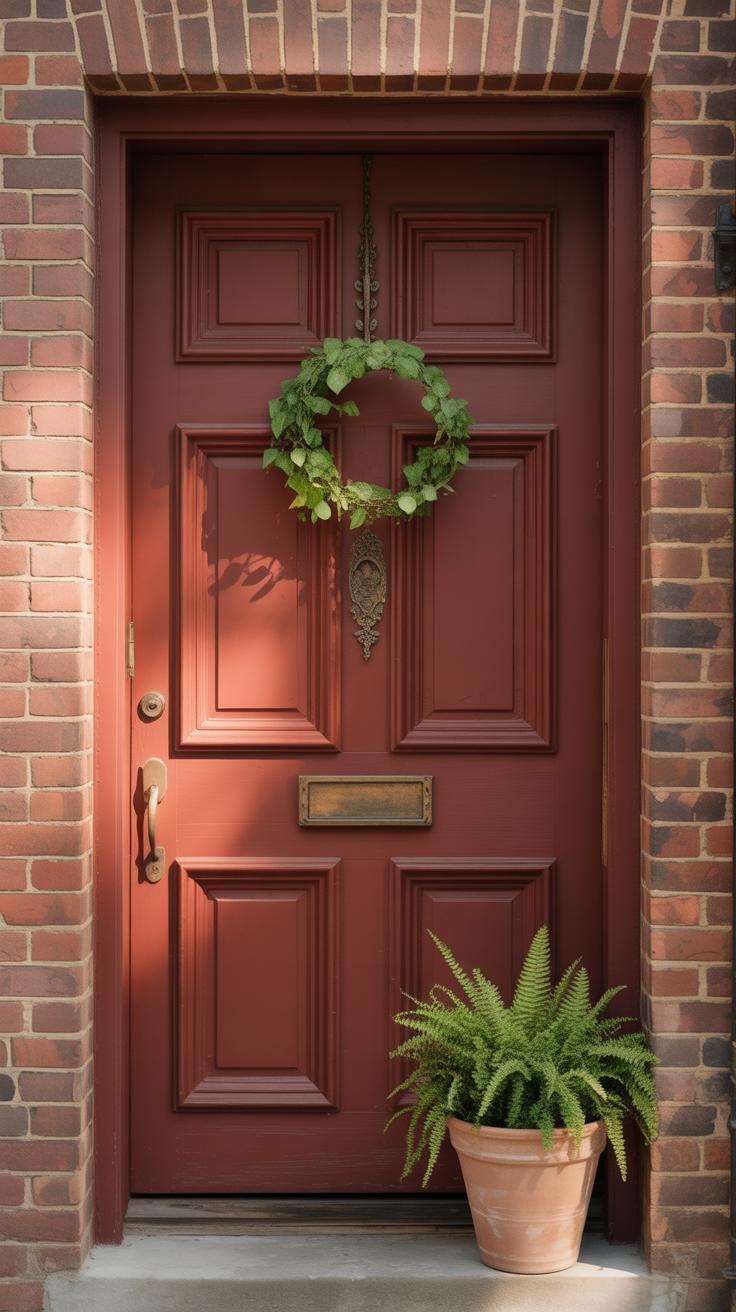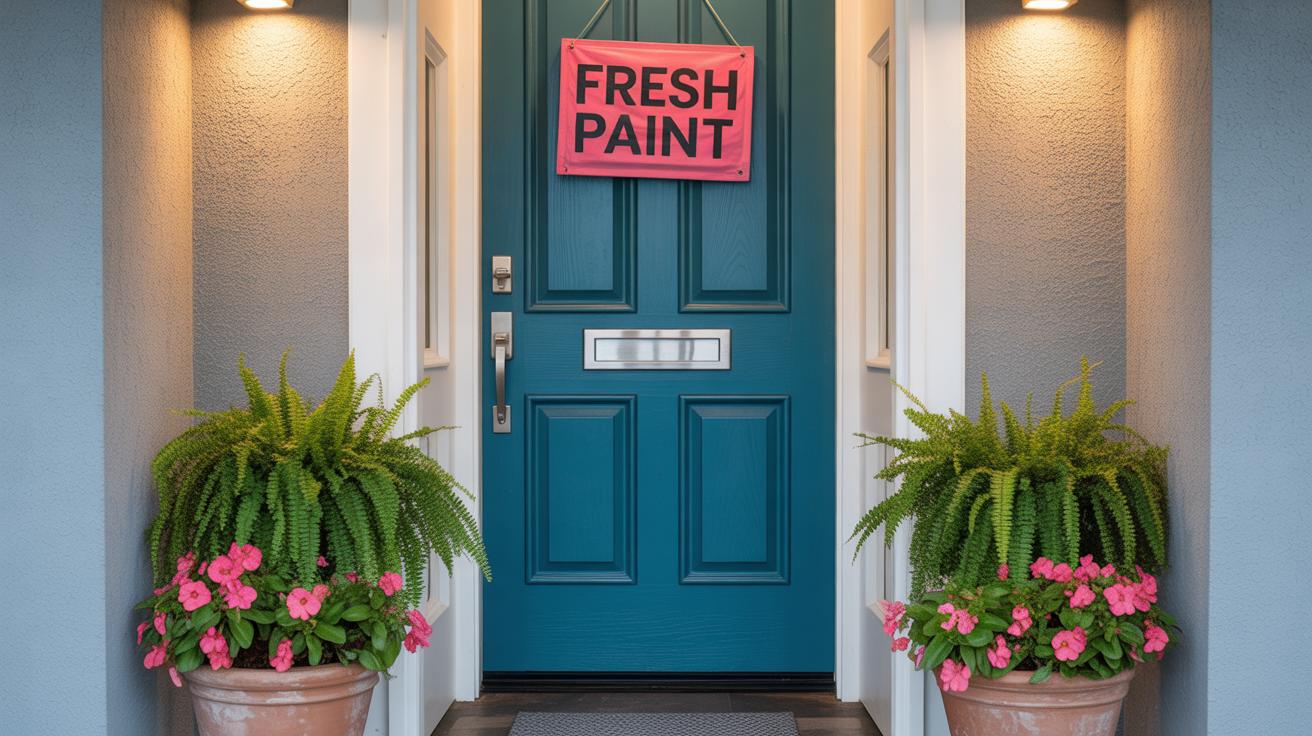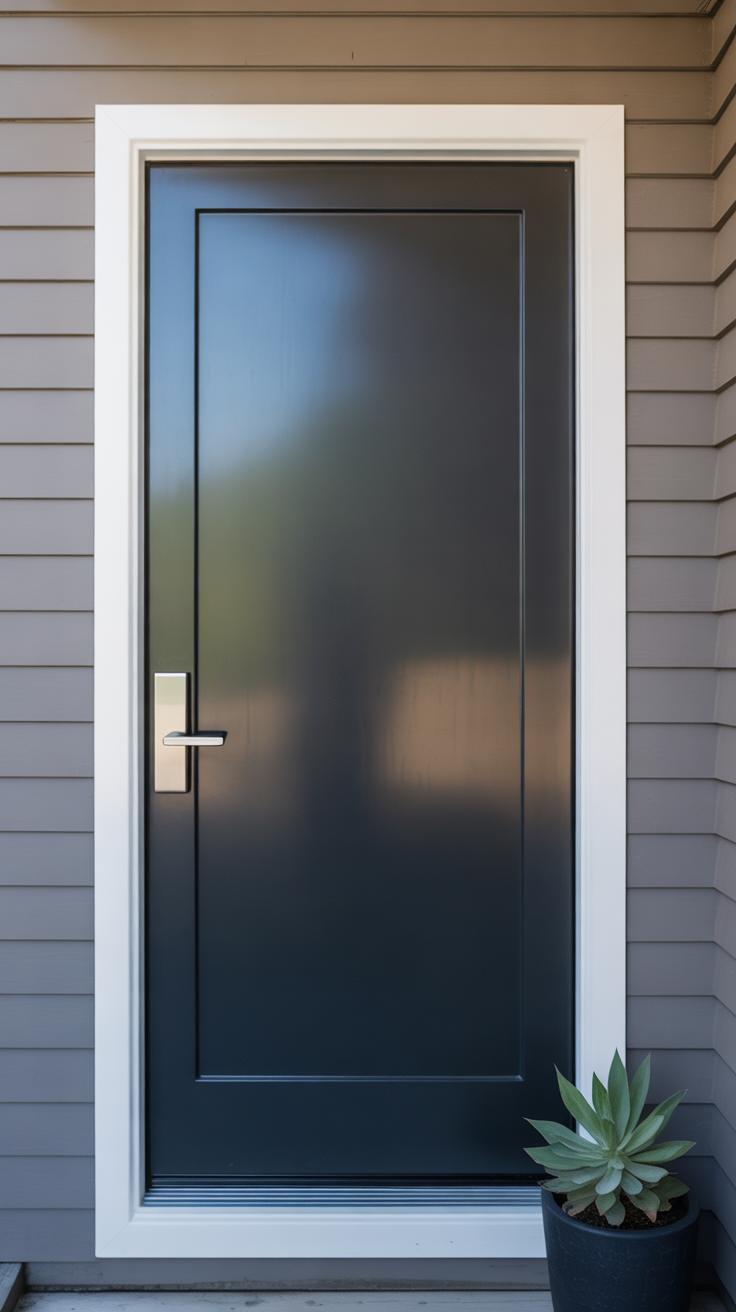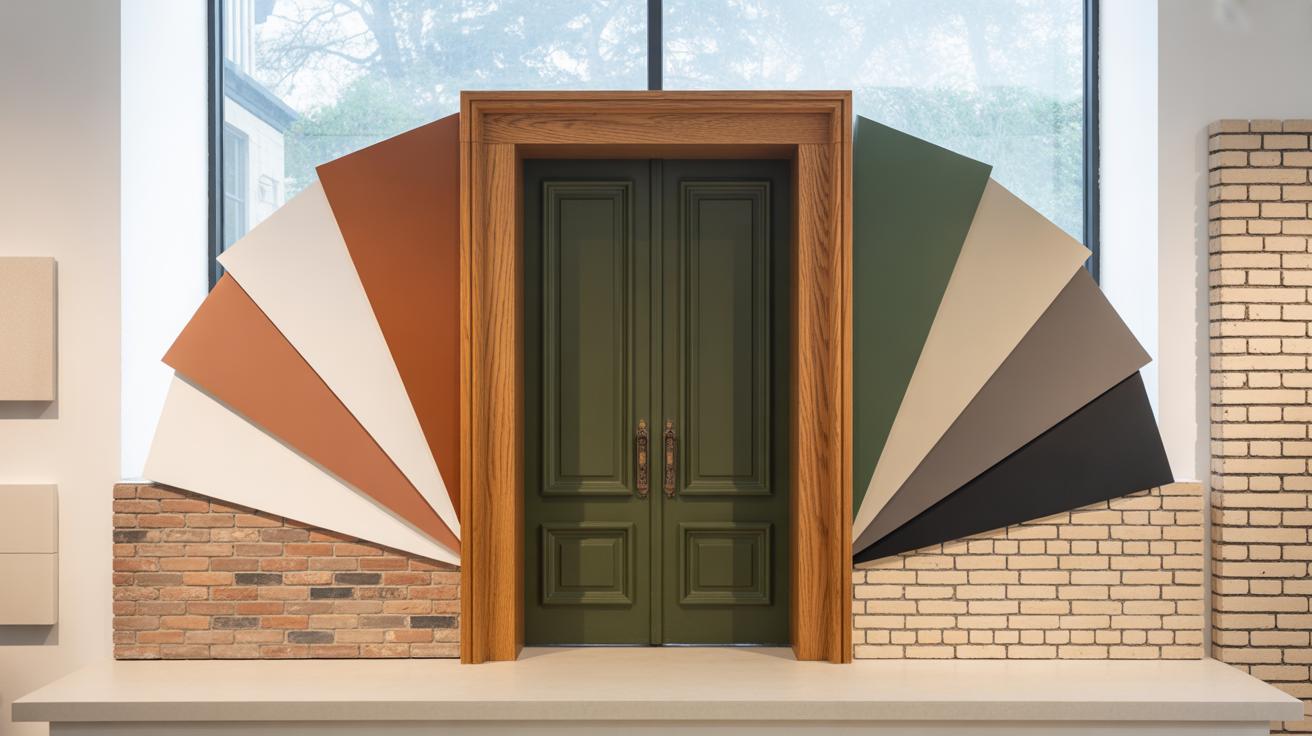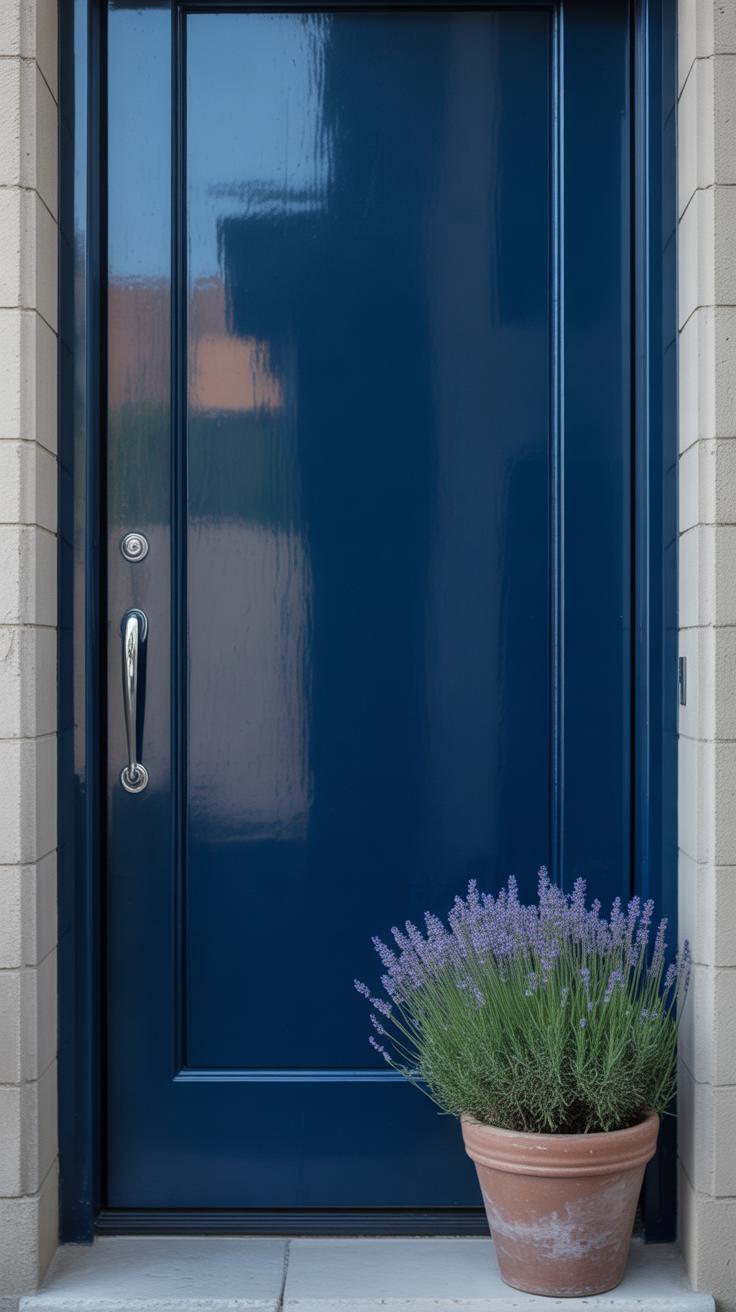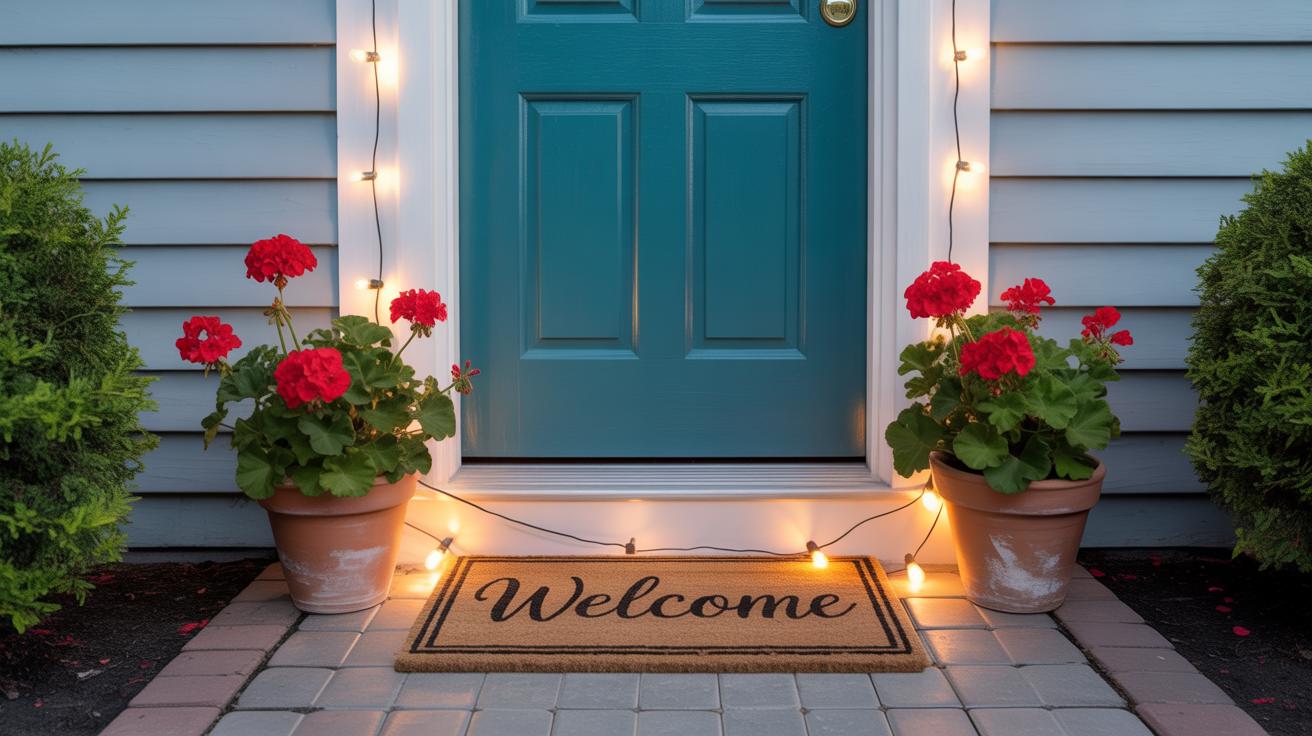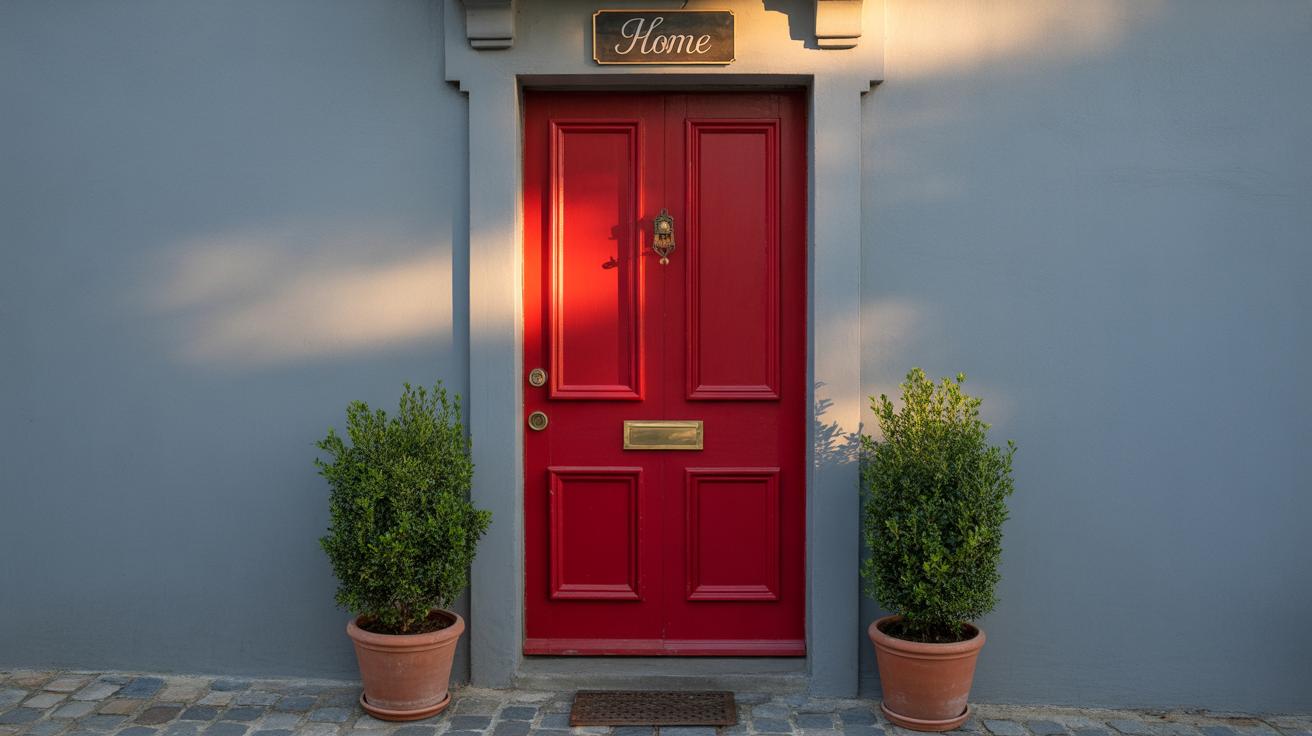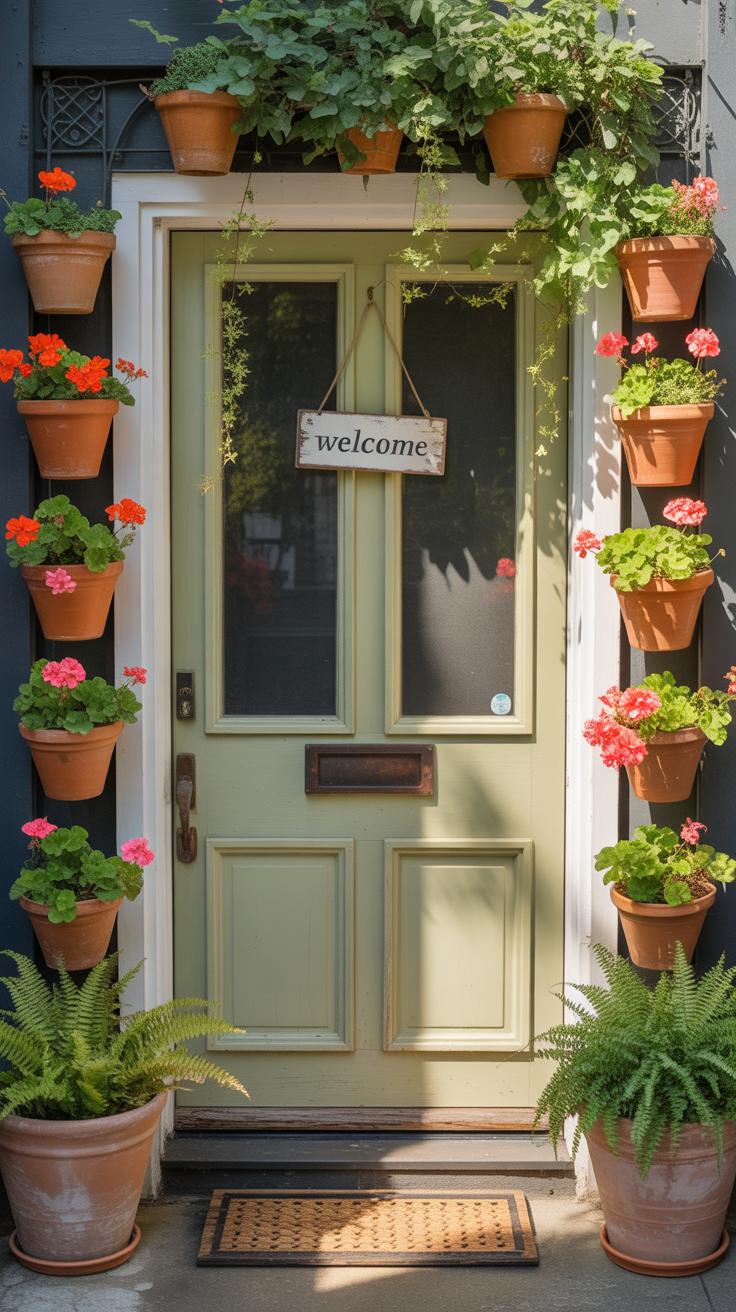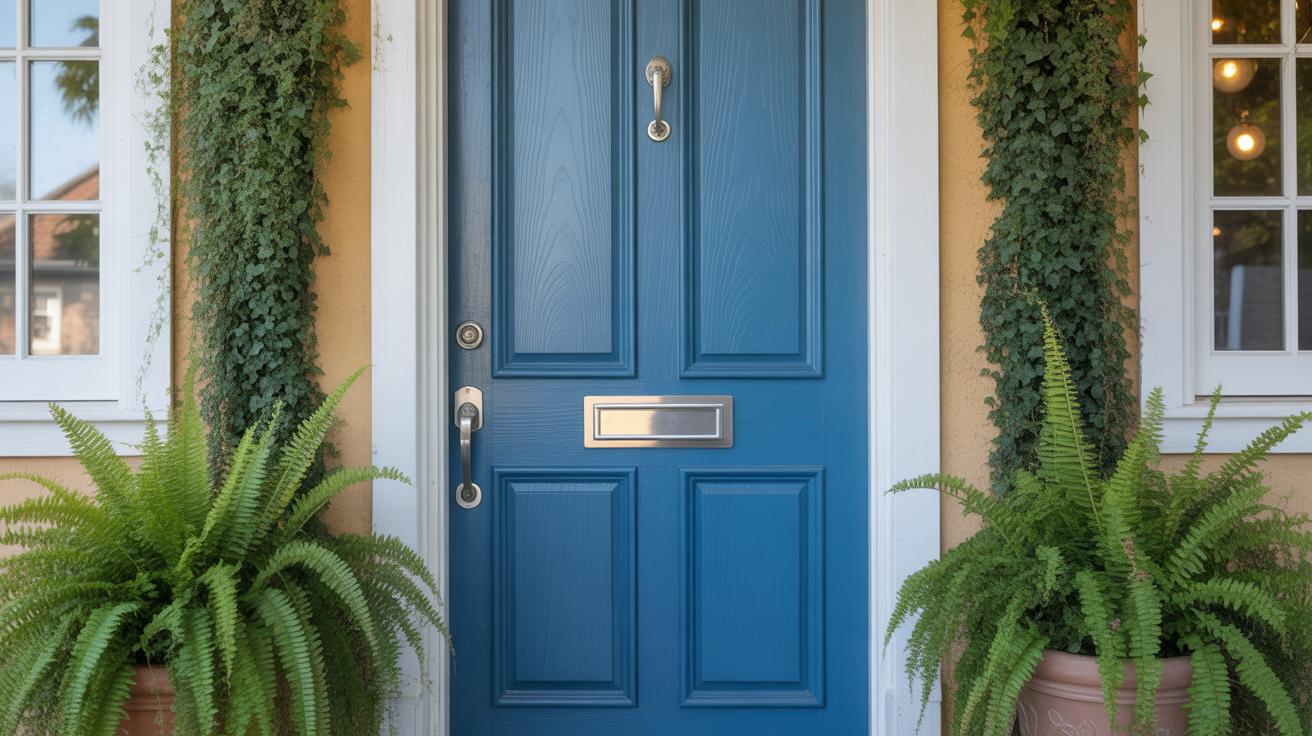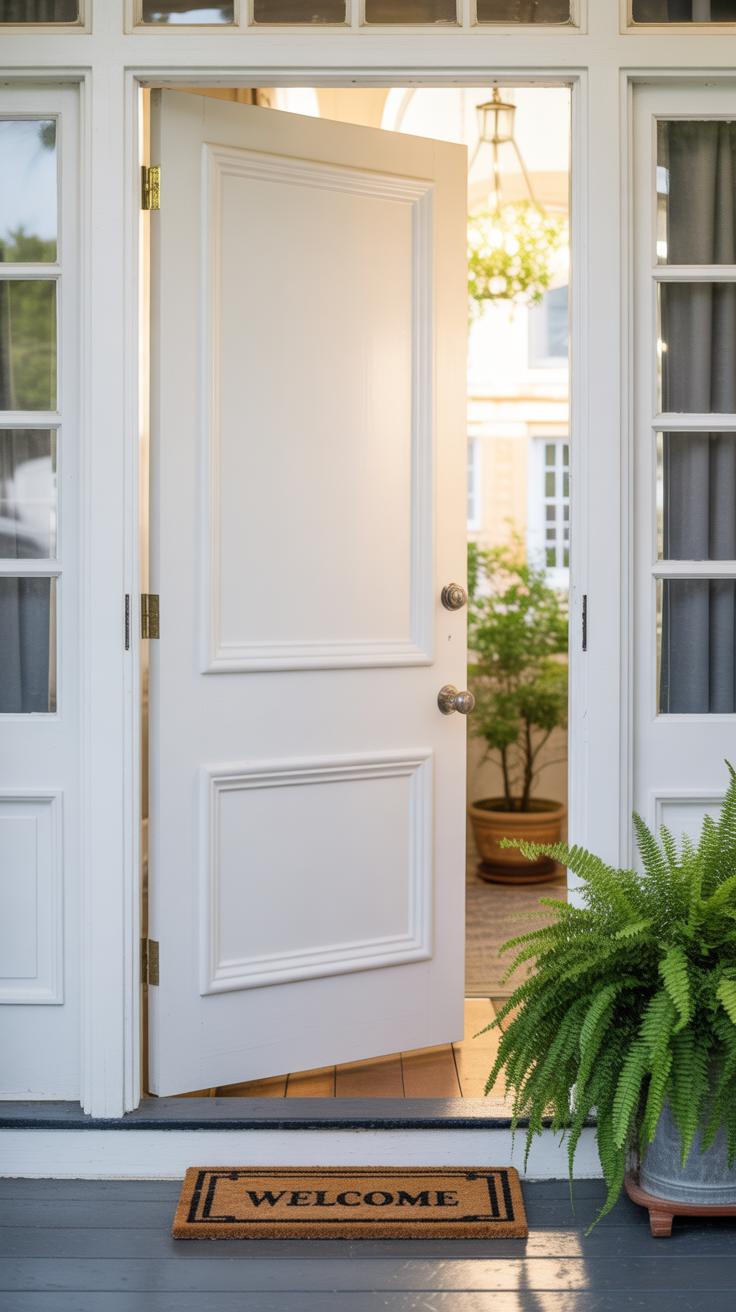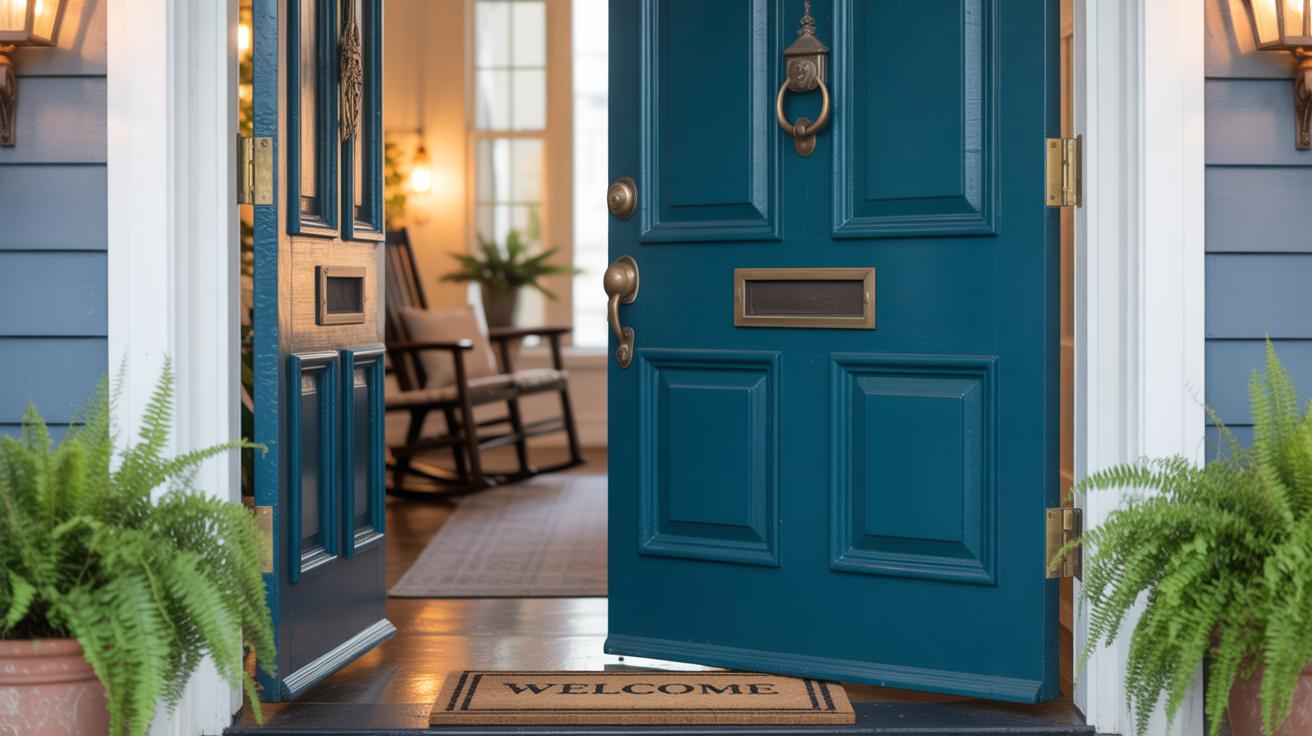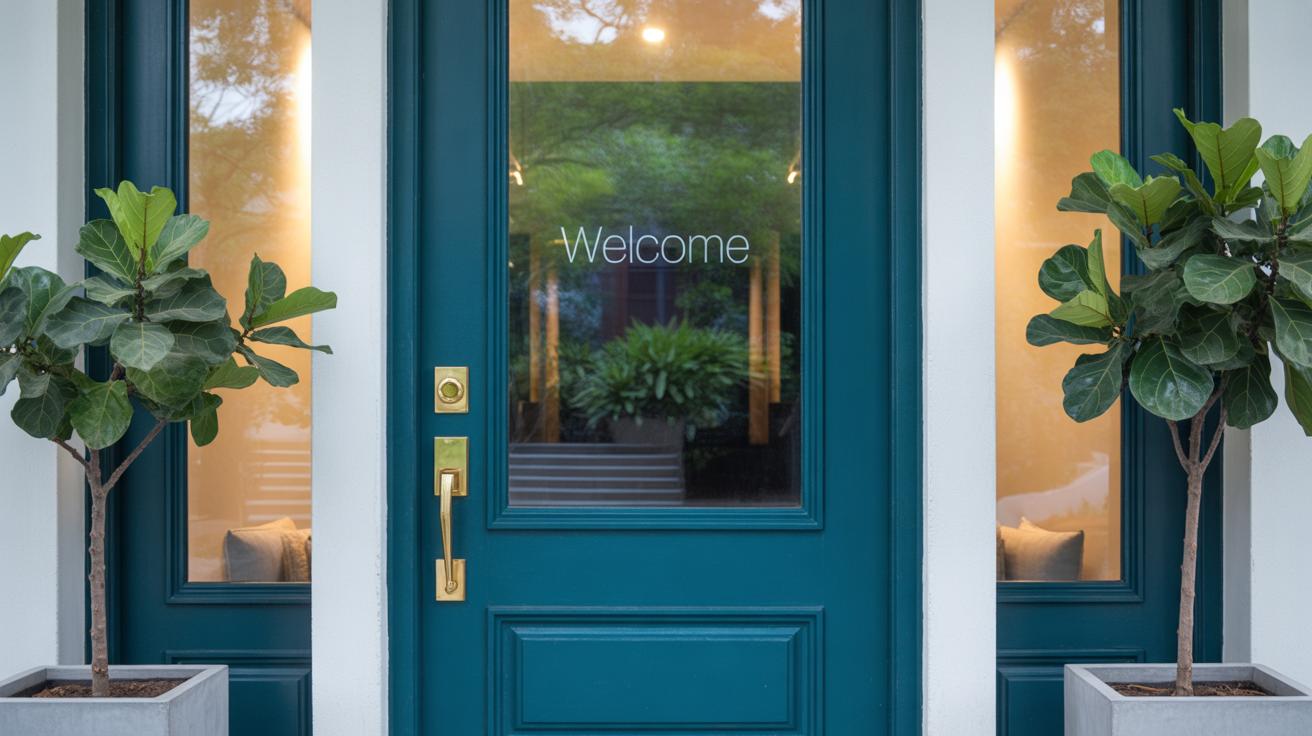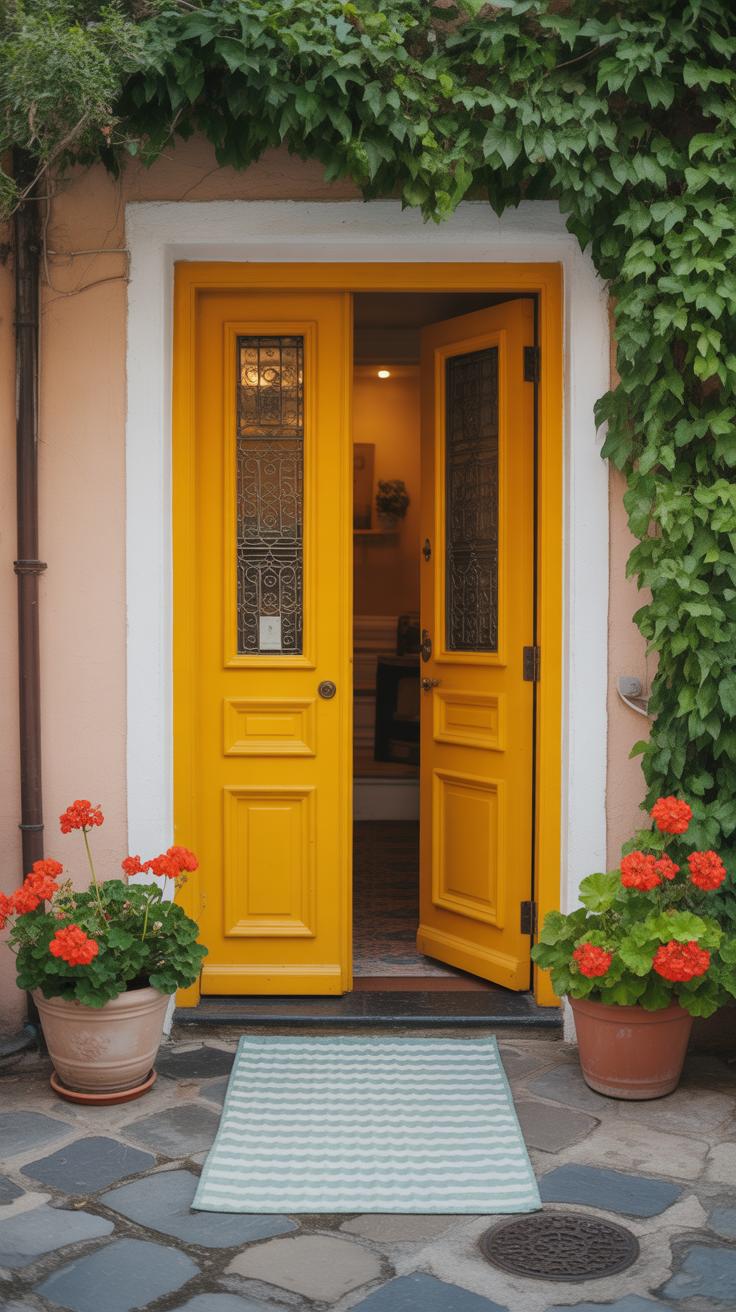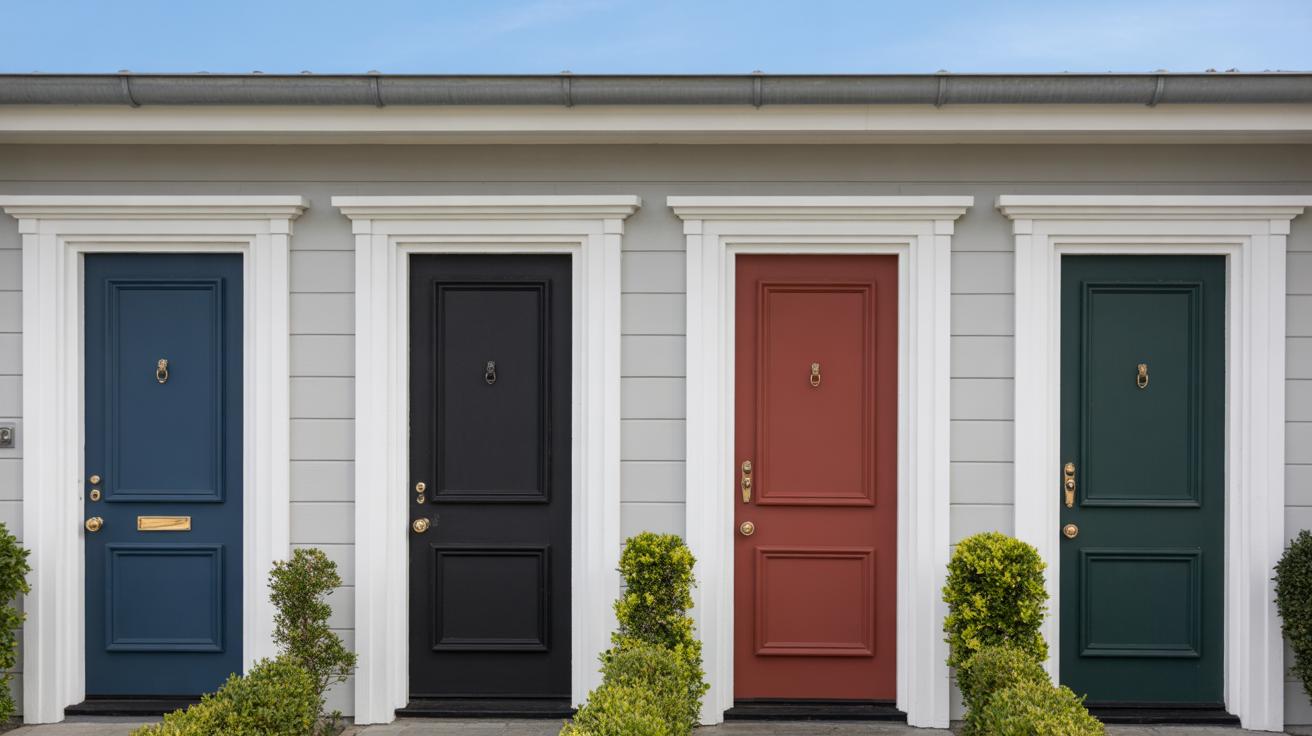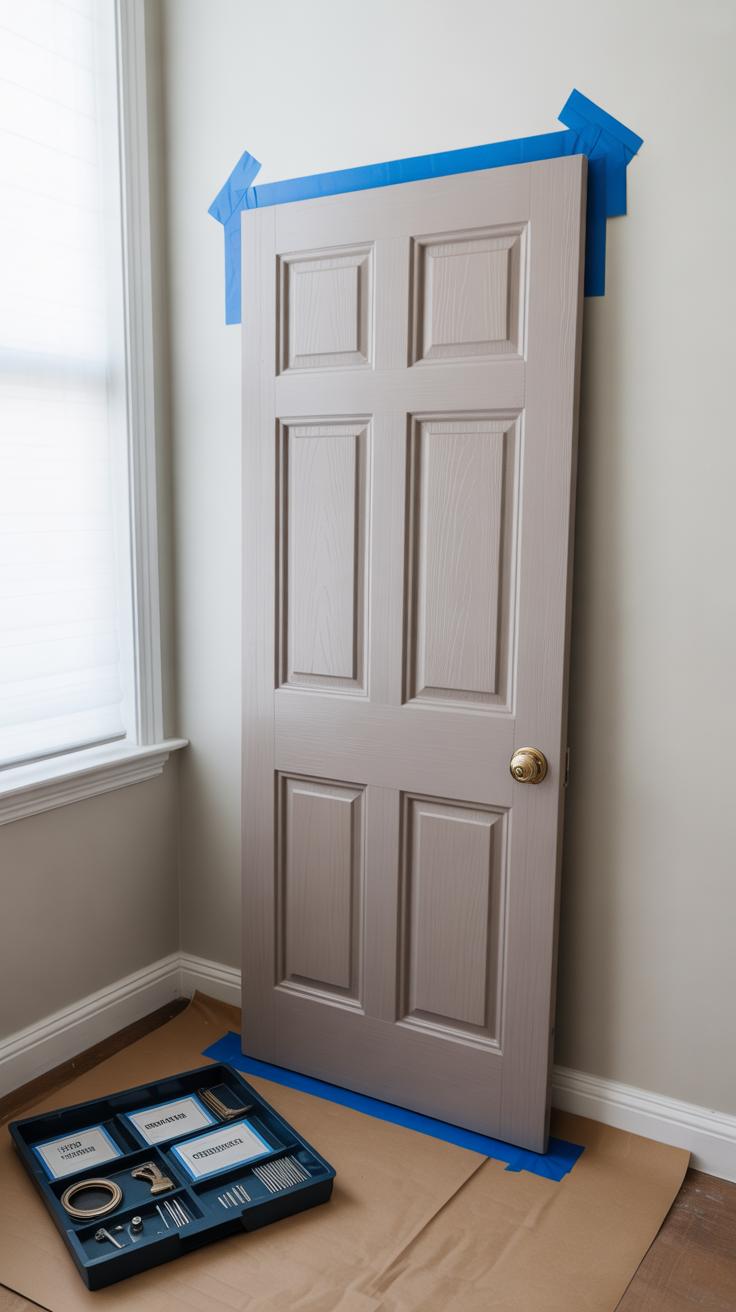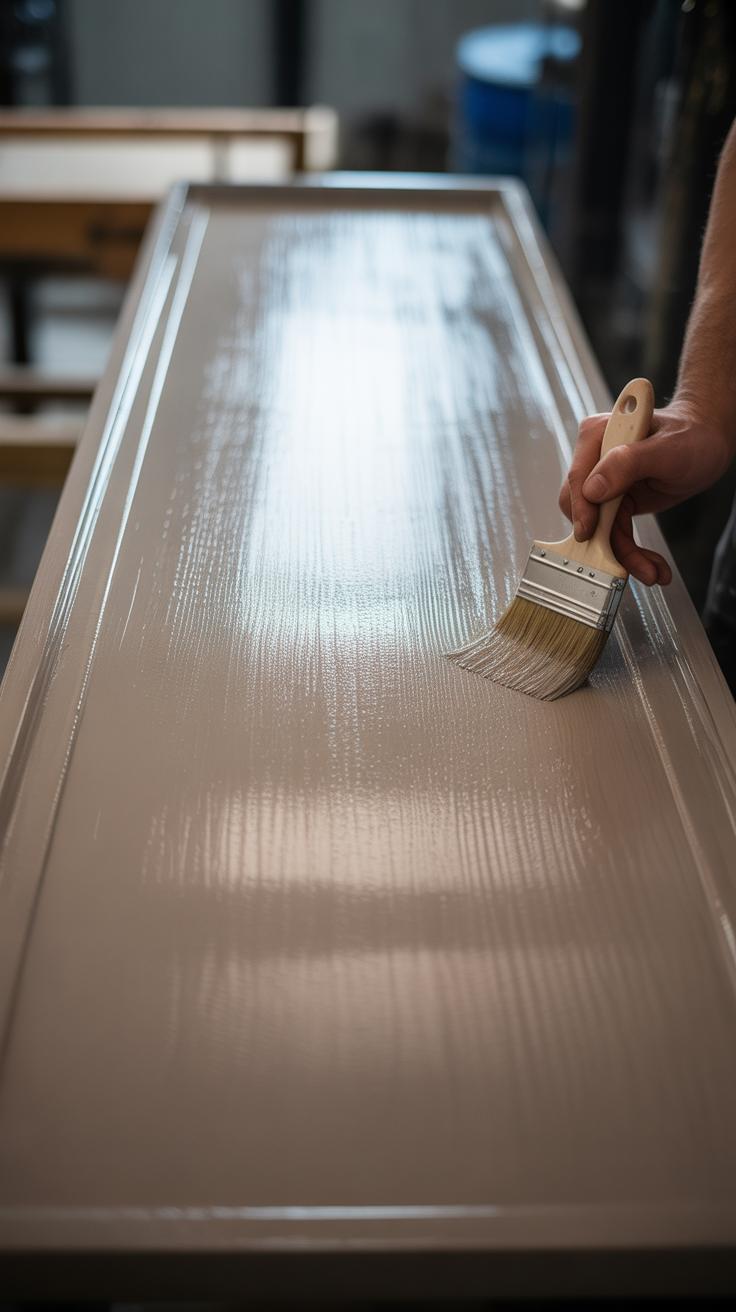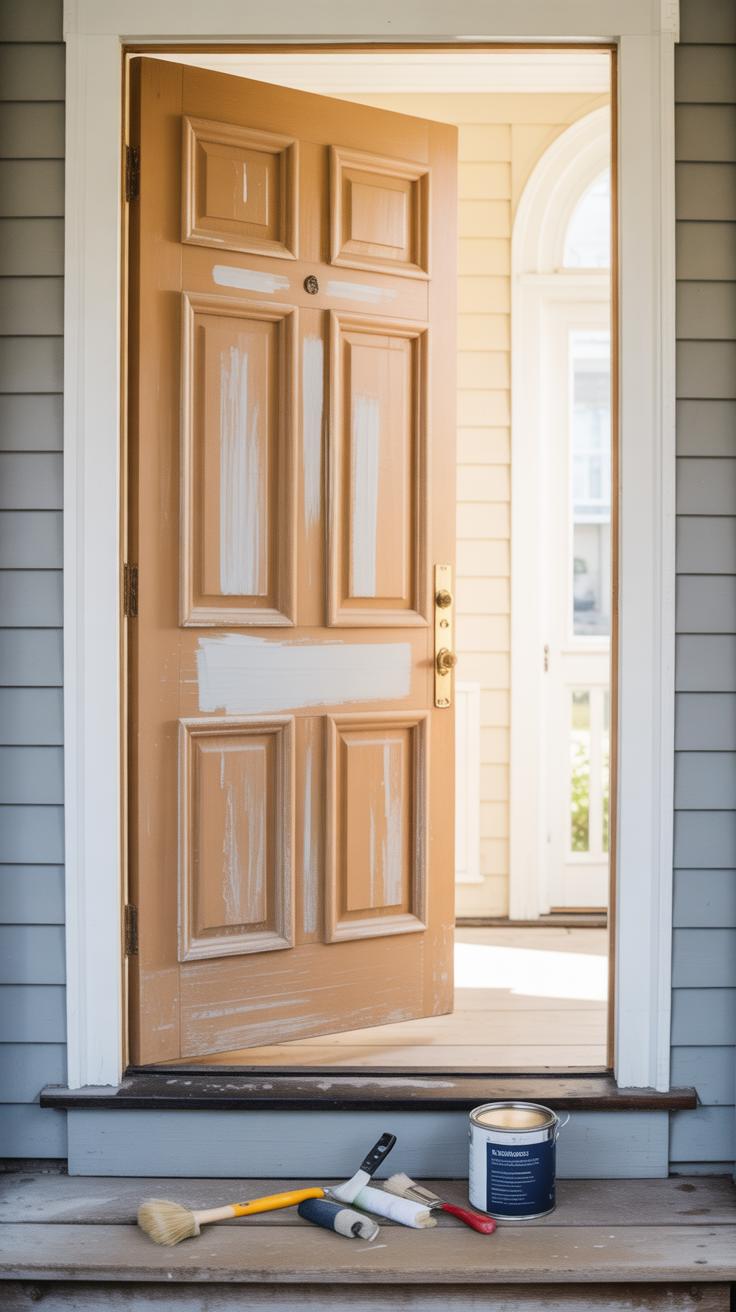Introduction
Choosing the right front door paint colors can make a big difference in your home’s appearance. Some colors stay popular for a long time because they look good on many homes. Knowing which colors never go out of style helps you pick a door color that you’ll like for years.
In this article, you will learn about classic front door colors, why they work well, and tips to pick the perfect one for your home. You will also find useful advice on caring for your front door paint to keep it looking fresh.
Classic Red Front Doors
The Meaning Behind Red Doors
Red doors carry a rich background that goes beyond just looking striking. In many cultures, red is tied to protection and good fortune. For example, early American settlers painted their doors red to signal a safe place for weary travelers. In Chinese tradition, a red door invites happiness and positive energy into the home. This symbolism often gives a red front door an immediate warmth and welcoming feel. You might not think about it consciously, but a red door can subtly suggest strength or a loving household just by its presence.
What’s interesting is how these meanings can shift based on context. In some places, red symbolizes courage or even danger. So, a red door isn’t just a color choice; it’s a message—even if unintentional—to passersby and guests, which can add a layer of personality to your house’s facade.
Shade Variations of Red
Not all red doors are created equal. The shade you pick can totally change the mood your entrance sets. Think about these popular options:
- Bright cherry red: This shade gives a bold splash of energy. It works well with colonial or traditional homes where you want to make a strong statement without being over the top.
- Deep burgundy: A darker, richer tone that feels more refined and even a little mysterious. You’ll often see this shade on historic homes or anything with brick exteriors because it complements warm hues.
- Rusty or brick red: This leans earthier and pairs nicely with craftsman or rustic styles. It’s less flashy but still inviting, making your entry feel grounded.
- Coral or softer reds: For a less conventional but still classic look, softer reds add a touch of approachability. They tend to suit cottages or beach houses and soften the overall impression.
Choosing your shade depends on not only your home’s architecture but your neighborhood vibe and personal taste. I remember standing in front of a bright red door one afternoon, unsure if it was too aggressive, but seeing how it caught the sunlight changed my mind—it somehow balanced boldness and charm perfectly.
Simple Black Doors For Any Style
Black front doors have this way of feeling both striking and subtle at the same time. Maybe it’s that sharp contrast they offer—drawing your eye without shouting. The color works across styles, from modern to traditional, because it’s neutral yet bold. I think people often underestimate how well black serves as the perfect backdrop, letting details like hardware or surrounding landscaping pop.
Why Black Always Looks Sharp
There’s a kind of quiet elegance in black doors. They don’t demand attention but earn it. Black can ground a home’s exterior, making everything look a bit more polished. Plus, it hides dirt better than lighter hues—practical, especially if you’re prone to ignoring doorstep mess. It’s versatile too, fitting urban townhomes or country cottages without much fuss. Sometimes, black feels a little serious, but maybe that’s why it stays timeless—never too trendy or too plain, just reliable.
Pairing Black Doors With Colors
Black pairs well with most exterior shades, which makes it easy to work with. For instance:
- White or cream walls create a classic, clean contrast, making the door stand out sharply.
- Gray exteriors—especially those on the cooler side—offer a more muted, sophisticated look.
- Earth tones like taupe or olive add some warmth, softening black’s intensity without losing style.
- Even bright colors, like mustard yellow or deep red accents, can harmonize with a black door, giving a balance between bold and grounded.
The hardware or trim can shift the mood too—brass pulls bring warmth; matte black knobs keep it sleek. So, whether you have a bold or calm facade, black’s adaptability is one of its strongest points. Does it ever get boring? Maybe sometimes, but in that way, it’s reliably stylish, and that counts for something.
Navy Blue For A Calm Look
Navy blue is one of those colors that feels both steady and soothing at the same time. There’s something about the depth of this shade that gives a front door a quiet confidence without shouting for attention. It has this timeless appeal—you don’t have to worry it will go out of style soon, which makes it an easy choice if you want your home to feel welcoming yet polished for years to come.
What’s interesting is how navy blue manages to play well with so many exterior colors and styles. Whether your house has white siding, brick, or even a softer cream or beige, a navy door tends to complement rather than compete. It’s like a calm anchor to the overall look of the home, giving just the right hint of color that’s not overpowering.
Why Choose Navy Blue
Why does navy blue appeal to so many homeowners? Partly because it’s versatile but also because it brings a quiet elegance. It feels less harsh than black but still carries that formality. You get a certain balance—it’s bold in a subtle way.
There’s also something practical about navy. It doesn’t show dirt easily, and over time, it holds up nicely against fading when compared to brighter blues. For those who want color with calmness and sophistication, navy might be exactly what you’re after. Sometimes, it’s the color you choose when you want to signal stability without feeling too predictable or plain.
Mismatched Styles That Work With Navy
-
Colonial and traditional homes gain a stately feel with navy doors, especially paired with crisp white trim.
-
Cape Cod and cottage styles look charming with navy, adding a little nautical touch without going full maritime theme.
-
Modern and contemporary designs benefit from the understated coolness navy provides, offering contrast without harshness.
-
Farmhouse or rustic homes can use navy doors to add a refined edge while keeping the cozy vibe intact.
-
Even Victorian or more ornate homes find balance with navy—dark enough to ground decorative details but subtle in presentation.
So if you’re questioning whether navy will suit your home’s character, chances are it’ll bring out something quietly confident. You might even find the color growing on you, becoming more flattering as you live with it. It’s worth trying if you want calm and timeless in one neat package.
Refreshing With Natural Greens
Green As A Connection To Nature
Green front doors offer something a bit different from the usual choices. There’s a sense of calm and welcome they provide, maybe because green reminds us of trees, plants, and fresh air. It’s like the door invites you in gently, creating a quiet bond between the home and the outdoors. When you walk up to a forest green or sage-colored door, it feels less flashy, more grounded—a subtle nudge that this place is connected to something beyond bricks and mortar.
Often, green tones make a home feel approachable without shouting for attention. I find that families love it because it blends with flower beds or climbing vines naturally. It’s a color that speaks softly but consistently, giving any entrance a timeless character.
Choosing The Right Green Shade
Picking a green can be tricky, mainly because green is such a wide family of colors. You might ask yourself: should I go deep like a pine forest or lighter, like soft sage? Your home’s exterior and garden can guide you here.
-
Homes with neutral siding—beige, ivory, gray—tend to pair beautifully with darker, richer greens. It’s a mature look but not overly formal.
-
If your yard has lots of soft greenery—lavender bushes, pale grasses—lighter green tones like sage or mint can enhance that gentle palette.
-
Brighter green shades might work if your house has modern lines and you want a bit of color without overwhelming boldness.
Sometimes you just have to sample a few shades outside. Paint swatches can look very different in changing natural light, so testing on the actual door or nearby trim can save headaches. Honestly, I’ve watched people change their mind after a day or two of living with a chosen green. It’s subtle but there’s variation in mood and impression depending on time and season.
Bright White Doors For A Clean Look
White has long been a classic choice for front doors, often seen as a symbol of simplicity and cleanliness. When you think about it, white stands apart because it reflects light well, giving your entrance a fresh feel that never seems to fade. It’s not just the brightness that captures attention; white doors convey a subtle sense of order and neatness that almost anyone finds appealing.
There’s something about white paint that’s both inviting and straightforward. It doesn’t distract but rather lets other features of your home shine, like brickwork or garden plants. Maybe that’s why so many traditional homes rely on white; it’s like a quiet statement that your home is cared for and welcoming—without shouting for attention.
White Doors And Curb Appeal
Picking white for your front door helps anchor the entrance visually, even if your home has a more complex exterior color palette. White can brighten a shaded porch and make your door pop against darker sidings. It draws the eye naturally and invites visitors in.
Many homeowners notice that a well-painted white door lifts the entire curbside vibe. It signals that the place is looked after. Sometimes, that simple choice nudges onlookers to slow down and appreciate the home more fully. Would anyone argue a fresh white door lacks impact? Probably not.
Maintaining White Paint
White does come with its quirks though. Dirt, dust, and fingerprints are easy to spot, so maintenance can feel a bit demanding. But you don’t have to be constantly repainting to keep it bright.
- Regularly wipe the surface with gentle soap and water to remove grime.
- Spot clean marks as soon as you notice them, especially in high-touch areas.
- Use quality exterior paint with mildew resistance, especially if your door sits in a shady or damp spot.
- Consider a satin or semi-gloss finish—it’s easier to clean and still catches light nicely.
Occasionally, I’ve wondered if white is just too high-maintenance for some homes. Then, after seeing how stunning it looks when cared for, I think it’s worth the little effort. What do you think? Would you tackle the upkeep for that crisp look?
Warm Yellow Doors For Cheerful Vibes
Yellow as a front door color feels like an invitation—warm, bright, and just a little unexpected. It’s one of those timeless choices you don’t see fading from style charts anytime soon. I think it brings a subtle cheerfulness that’s hard to ignore. Not shouty or overwhelming, but enough to signal that something friendly lives behind that door.
There’s this natural energy yellow doors bring—like a morning sunbeam landing right on your porch. It can make even the dullest exteriors feel welcoming. You might catch yourself smiling when you come home to it, or feeling a bit more upbeat stepping inside. Odd how much color can affect mood—yet yellow seems to do it in a light, easy way without getting over the top.
Pairing yellow doors with your house’s exterior is where it gets interesting. Yellow can work well with several colors, but the key is in the shade and tone you pick.
- For neutral houses, like gray or taupe, a soft buttery yellow adds warmth without clashing.
- With blue exteriors, a richer mustard yellow offers a nice pop, balancing cool and warm tones.
- If you have white siding, brighter lemon yellow keeps things fresh but not too intense.
Sometimes, yellow might feel too casual for more formal settings. But honestly, that’s part of its charm—it breaks stiffness without being childish. Maybe it’s not for everyone, but yellow doors tend to keep people guessing in a good way, inviting curiosity.
Preparing Your Door For Painting
Cleaning And Sanding The Surface
You can’t just slap paint on a dirty or rough door and expect it to last. Cleaning is the first step—get rid of all dust, dirt, grease, and any loose paint. Use a mixture of warm water and mild soap or a gentle detergent. A soft scrub brush or sponge works well here, but don’t soak the wood. After wiping it down, let the door dry completely before moving on.
Next comes sanding. This might feel tedious, but it’s key for paint adhesion. If your door already has old paint, sanding loosens any flaky bits. If it’s bare wood, sanding smooths out rough patches and grain. Use medium-grit sandpaper (around 120 grit), and then follow with a finer grit (220) to finish. I often wonder if skipping this step really saves time, but paint tends to chip far sooner when you do. Also, sand in the direction of the wood grain—that’s a detail that makes a difference, even if it seems minor.
Priming For Better Results
Priming? It might sound like an extra hassle, but it’s worth it. Primer seals the wood or smooths older surfaces and stops stains from bleeding through. Without it, your paint might peel quicker or patch unevenly. Pick a primer that suits your door’s material — wood, metal, or fiberglass all need different ones. Apply it thinly and evenly; thick layers can cause drips or longer drying.
Let the primer fully dry before painting. I’ve learned this the hard way—rushing that step leads to a finish that doesn’t feel right and may blemish. Depending on your door’s condition, a second coat of primer might help, especially if you’re covering a dark or uneven surface. It’s not always needed, but keeping that option in mind might save headaches down the line.
Painting Techniques For A Smooth Finish
Getting a smooth finish on your front door often depends on the way you apply the paint. You want to avoid obvious brush strokes or those annoying drips that can ruin all your hard work. One trick I’ve found helpful is to start with a high-quality angled brush for the edges and detailed areas. That gives you control to carefully cover corners without overloading the surface.
For the larger flat panels, a small foam roller works well. Foam tends to leave a finer texture than traditional bristle rollers, and it spreads paint evenly without streaks. You do have to watch out for bubbles though, which can pop with a light touch. Rolling back and forth in thin layers usually sorts that.
Applying paint in thin coats is a bit like building layers. Thicker coats dry unevenly, trapping moisture and causing runs or drips. It’s tempting to slather on the paint to finish faster, but the payoff isn’t worth it. Patience matters here: paint a thin layer, let it tack up, then add another. You can even lightly sand between coats if you want ultra-smooth results, but that’s optional—depends on how perfectionist you feel that day.
You might wonder why all these extra steps? Well, each coat dries faster, and you get better color depth without losing detail. Plus, who really wants brush marks staring back every time they come home? Personally, I don’t mind a bit of texture, but if you’re aiming for that picture-perfect door, these techniques can really make a difference.
Maintaining Your Painted Front Door
Keeping your front door looking fresh isn’t as tricky as it might seem. A quick wipe-down every now and then can make a big difference. You don’t need fancy cleaners—a gentle mix of warm water and a little dish soap usually does the trick. Just grab a soft cloth or sponge and avoid anything too abrasive that could wear down the paint.
Sometimes, dirt or grime hangs around stubbornly. In such cases, a magic eraser—used carefully—can help lift spots without removing too much paint. But honestly, test it somewhere inconspicuous first. You wouldn’t want to trade grime for unexpected dull patches.
Spot Repair And Touch Ups
Small chips or scratches often catch your eye more than they should. The good news? Fixing them can be quick. Keep some leftover paint from when you originally painted your door. When you see a chip, give the spot a light sanding with fine-grit sandpaper to smooth rough edges. Then, with a small brush, apply a thin layer of paint, feathering it into the surrounding area.
Waiting for it to dry completely is key. If you rush, you might notice uneven spots later. Touch-ups might never look 100% seamless, especially on darker colors or high-gloss finishes. Still, they help slow down wear and maintain the door’s appeal longer.
It’s easy to overlook this kind of upkeep. But I’ve found that making a habit of checking the door every few months saves headaches later. Why let tiny flaws accumulate and become eyesores? Your door, after all, sets the tone for the whole house.
Conclusions
Picking a timeless front door color adds charm and value to your home. Colors like red, black, and navy blue have been popular for many years because they suit most home styles. Using colors that complement your house and neighbors creates a welcoming feel.
Remember to prepare your door properly before painting and maintain it over time. These steps keep the paint looking good longer. Choosing a classic color and taking care of your door helps you enjoy a beautiful entryway every day.

